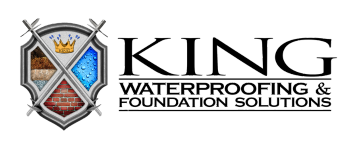Concrete surfaces such as driveways, sidewalks, patios, and garage floors play a crucial role in the functionality and aesthetics of any property. However, over time, these surfaces can become uneven due to soil erosion, moisture exposure, and changing weather conditions. When this happens, homeowners often assume that complete concrete replacement is the only option. Fortunately, King Waterproofing and Foundation Solutions provides an efficient and cost-effective alternative: concrete leveling.
Instead of enduring the hassle and high cost of tearing out and replacing concrete, concrete leveling restores sunken slabs to their original position, improving safety, appearance, and usability. In this guide, we will explore everything you need to know about concrete leveling, including how it works, different types, and signs that indicate it’s time to take action.
The Comprehensive Guide to Concrete Leveling
What Is Concrete Lifting?
Concrete lifting, also known as concrete leveling or slab jacking, is a repair technique used to raise and stabilize uneven concrete surfaces. This process is ideal for fixing driveways, walkways, patios, garage floors, and even interior concrete slabs.
Instead of removing and repouring concrete, lifting methods restore the sunken areas by injecting a specialized material beneath the slab to raise it back to its original level. Concrete lifting is a cost-effective and minimally invasive solution compared to full slab replacement.
How Does Concrete Lifting Work?
Concrete lifting involves filling the voids beneath sunken concrete surfaces to restore their proper level and structural integrity. The process generally follows these steps:
Assessment – A professional evaluates the affected concrete areas to determine the extent of the settlement and the best lifting approach.
Drilling Injection Points – Small holes are drilled into the sunken slab to allow material injection.
Material Injection – A specialized lifting material, such as polyurethane foam or cement slurry, is injected beneath the concrete.
Lifting & Stabilization – The injected material expands, lifting the slab back to its original position and filling voids to provide long-term stability.
Sealing & Cleanup – After lifting is complete, the holes are sealed, and the area is cleaned to restore its appearance.
Types of Concrete Lifting
There are different methods of concrete leveling, each suited for various conditions:
- Mudjacking
A traditional method that involves injecting a mixture of cement, sand, and water beneath the concrete to lift it.
Cost-effective but heavier than alternative materials, which can contribute to future settlement.
- Polyurethane Foam Lifting
A modern and highly effective method where lightweight polyurethane foam is injected beneath the concrete.
The foam expands to fill gaps, providing superior lift, strength, and durability.
Water-resistant and environmentally friendly.
- Pressure Grouting
A technique used mainly for large voids under concrete structures.
Involves injecting a dense grout mixture to stabilize and support the foundation.
Among these methods, polyurethane foam lifting is often the best choice due to its longevity, lightweight properties, and resistance to erosion.
Reasons to Use Polyurethane Concrete Lifting
Polyurethane concrete lifting offers several benefits that make it the preferred option for homeowners and businesses in Monmouth, IL:
Quick & Efficient – The process is fast, with most jobs completed in a few hours.
Minimal Disruption – No need to remove concrete, allowing normal activities to resume quickly.
Lightweight & Durable – Unlike mudjacking, polyurethane foam does not add excessive weight to the soil, reducing the risk of future settlement.
Water-Resistant – The material repels moisture, preventing further soil erosion and damage.
Eco-Friendly – Uses non-toxic materials that do not harm the environment.
Long-Lasting Results – Once injected, polyurethane foam maintains its structural integrity for years.
Signs That Concrete Lifting is Needed
If you notice any of the following issues around your property, it’s time to consider concrete lifting:
Uneven or Sunken Slabs – If a driveway, sidewalk, or patio appears slanted or has dips, concrete settlement may be the cause.
Cracks in Concrete – Gaps or cracks in concrete surfaces indicate shifting and sinking due to unstable soil.
Pooling Water – Water accumulating in certain areas of a concrete surface suggests an uneven slab that needs leveling.
Difficulty Shoveling Snow or Moving Furniture – An uneven surface can make everyday activities more challenging, from snow removal to setting up patio furniture.
Trip Hazards – Raised or sunken concrete edges create dangerous trip hazards for residents and visitors.
Addressing these issues promptly can prevent further damage and costly repairs in the future.
Conclusion
Concrete leveling is an excellent alternative to replacement, providing a cost-effective, long-lasting, and efficient solution for uneven or sunken concrete surfaces. King Waterproofing and Foundation Solutions proudly offers professional polyurethane concrete lifting in Monmouth, IL, ensuring your driveways, sidewalks, patios, and other concrete structures remain safe and stable.
If you are dealing with uneven concrete, don’t wait until the problem worsens. Contact King Waterproofing and Foundation Solutions today for a free assessment and expert concrete leveling services!


